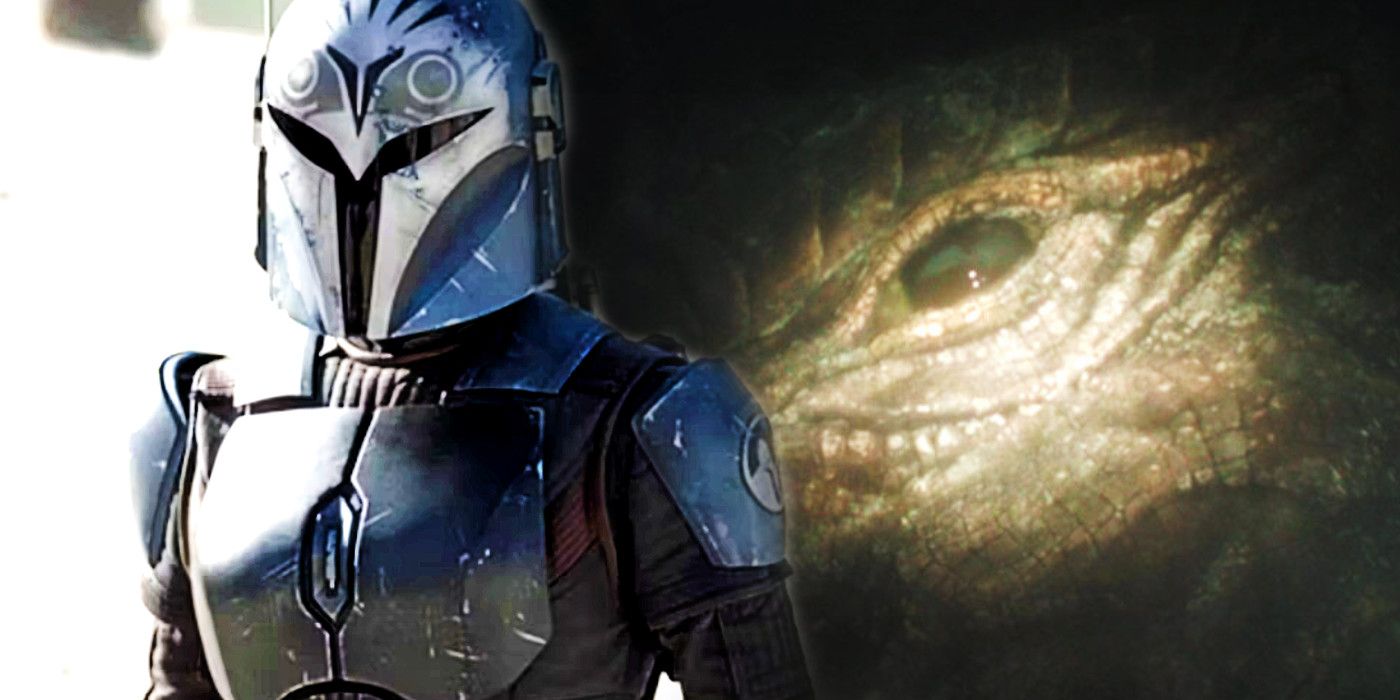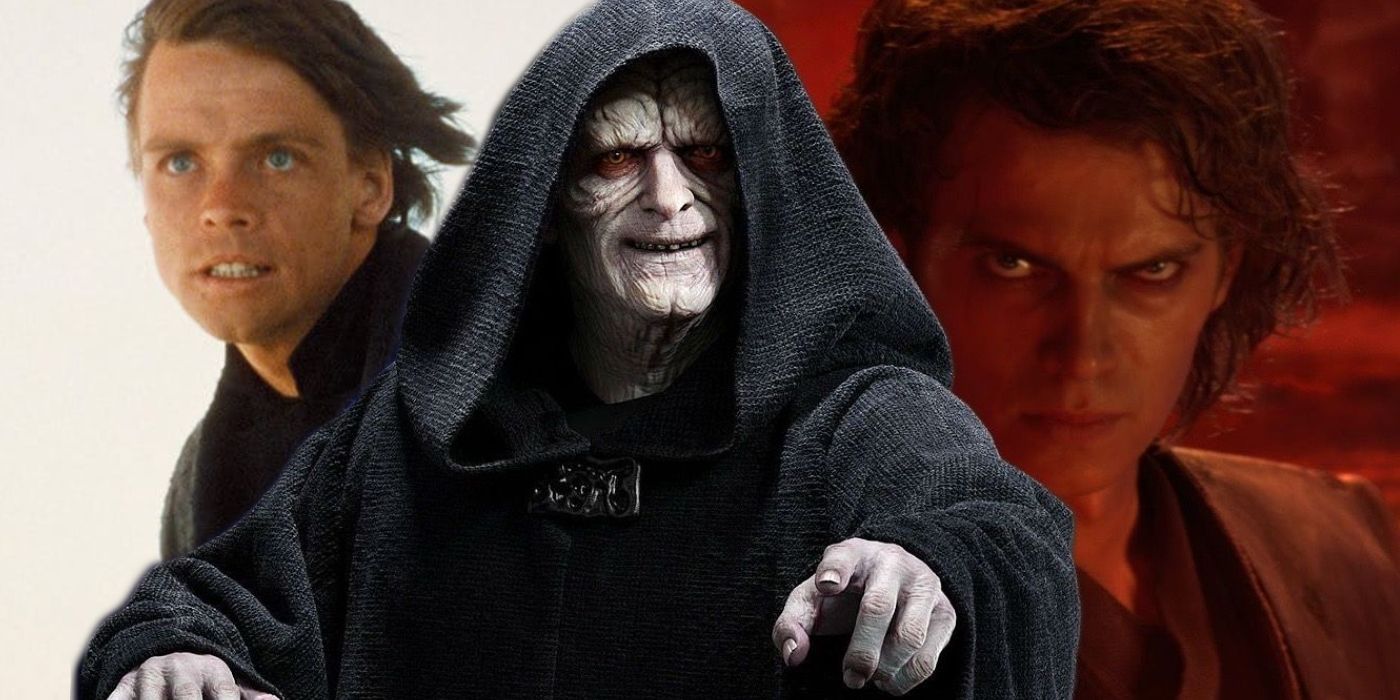Warning! This article contains SPOILERS for The Mandalorian season 3, episode 3.
The Mandalorian season 3, episode 3’s title, “Chapter 19 – The Convert,” has a much deeper Star Wars meaning. The Mandalorian season 3 has had an unexpected twist, as Bo-Katan Kryze (Katee Sackhoff), while keeping the secret of the Mythosaur’s existence to herself, becomes an unexpected member of Din Djarin’s (Pedro Pascal) Mandalorian covert. The consequences these events might have for the rest of Bo-Katan’s narrative arc and even the future of Mandalorian culture is immense, and prove that The Mandalorian season 3 is heading in a direction most didn’t anticipate before the new season premiered.
But as The Mandalorian season 3 progresses and expands its reach across the Star Wars universe, the story becomes increasingly divided. The Mandalorian season 3, episode 3, has proven divisive with viewers as they come to terms with two entirely different narratives being explored in one episode: Mando and Bo-Katan’s fight to get back to the covert, and the resurrected tale of Dr. Pershing (Omid Abtahi), the Empire’s foremost cloning expert. It is “The Convert” title, however, that explains why these two entirely separate storylines were brought together in the same episode.
The Mandalorian Season 3, Episode 3's Title Has A Double Meaning
“The Convert”, in this case, applies to both Bo-Katan and Dr. Pershing’s stories. For Bo-Katan, “convert” could apply to her in two ways. Bo-Katan becoming a member of Mando’s covert, a group that she’s shunned all this time, could make her a convert, especially if she accepts their offer and integrates herself into the group. Despite Bo-Katan’s previous dislike of the Children of the Watch, and her attempts to convince Din that there is more than one way to be a Mandalorian, she might now find herself in desperate need of companionship and acceptance. Bo-Katan has lost everything, most recently her home. She might just be willing to join them if it means having people that stand by her once again.
“Convert” also relates to the momentous shift in Bo-Katan’s beliefs now that she’s seen the Mythosaur actually exists. That single moment could be enough for her to start believing in the Creed. Discovering that something that has always been viewed as a legend and a fairytale is genuinely true can be powerful enough to upend someone’s entire worldview. She might just convert to the Armorer’s ways. If she does, it will be interesting to see how Bo-Katan and Mando’s experiences within the covert compare to one another.
Dr. Pershing, as well, can be viewed as a convert. After being taken prisoner by the New Republic, The Mandalorian season 3, episode 3 reveals that he’s being reintegrated into society through a program intended to give him the chance to atone for his war crimes. As a result, Dr. Pershing begins to view society through a different lens, grateful to the New Republic for giving him a second chance at life and realizing that the Empire, certainly, wouldn’t have given him a new start. Pershing truly believes that his cloning work can help the people of the New Republic, despite that kind of science being forbidden, and buys in to the New Republic’s amnesty program.
"The Convert" Hints The Battle Between Empire & Rebellion Is A Religious War
Though the word convert can be defined in several ways, one of its most prominent interpretations pertains to a shift in one’s religious beliefs. This might be exactly what is happening to Bo-Katan now that she knows the truth about the Mandalorian’s cultural symbol. But, as this is Star Wars, the word convert pertains to more than just Bo-Katan and Dr. Pershing’s individual stories. The war between the Empire and the Rebellion could easily be classified as a religious conflict. Though it may not seem like it on the surface, both the Empire and the Rebels are ruled by the ideas of ancient religions.
With Palpatine as the Emperor, one of the most influential Sith Lords in the history of the Star Wars galaxy, the Empire can straightforwardly be identified as a religious institution. The Empire is a tool with which Palpatine can gain more power, which is the ultimate goal and obsession of any member of the Sith Order. This idea is actually reinforced by Palpatine’s exploits on Exegol in Star Wars: The Rise of Skywalker. Similarly, the Rebellion is guided by the notion that the Jedi, who are beholden to another ancient religion, can provide the ultimate solution to the Empire’s grip on the galaxy. Luke Skywalker was their new hope, a hero from a bygone era – a messiah.
When looking at the conflict between the Empire and the Rebel Alliance through a religious lens, the tragedy of Anakin Skywalker cannot be ignored. Palpatine forces him to convert to the dark side, manipulating Anakin’s anger and helplessness to suit his own needs. Similarly, when Luke becomes the catalyst for Darth Vader’s redemption in Return of the Jedi, Anakin is converted back to the light side, that which the Jedi religion believes in and fights for. Though it may not seem like it on the surface, The Mandalorian season 3, episode 3 provides an interesting bit of context to one of the biggest struggles in Star Wars history.
New episodes of The Mandalorian air Wednesdays on Disney+.



